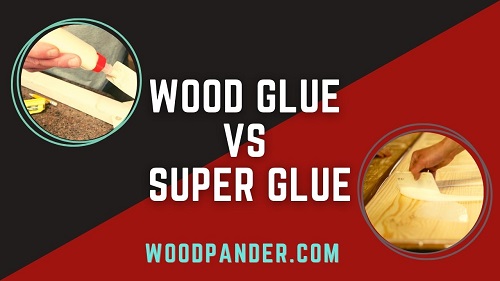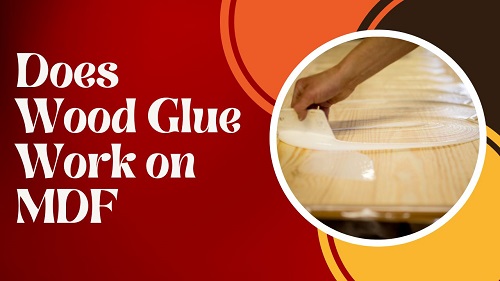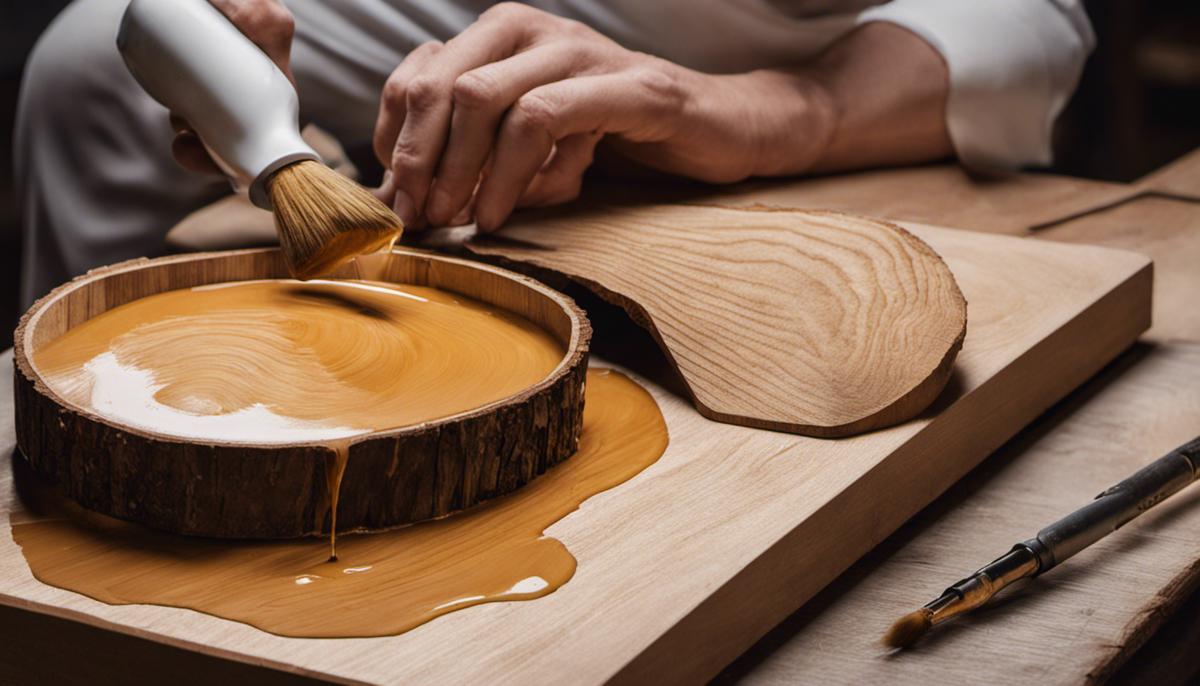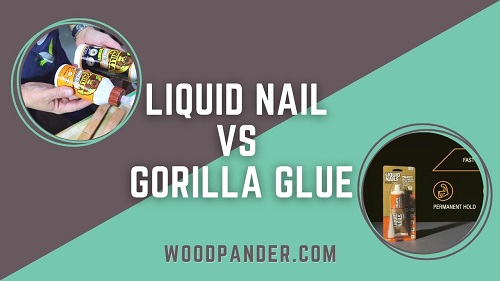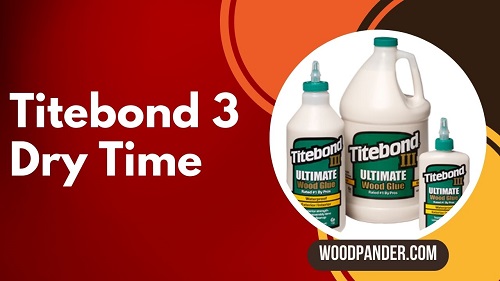When it comes to woodworking and carpentry projects, wood glue is a versatile adhesive that is commonly used to join wood pieces together.
However, if you’re working with painted wood surfaces, you may wonder whether wood glue can still be effective in creating a strong bond.
In this article, we’ll explore the compatibility of wood glue and painted wood, examining the factors to consider and providing guidelines for achieving successful adhesion.
| Aspect | Wood Glue on Painted Wood | Notes |
|---|---|---|
| Adhesive Strength | May vary depending on the type of paint and surface preparation | Wood glue may have reduced bonding strength on painted surfaces due to paint barrier. |
| Paint Compatibility | Works best on porous and non-glossy paints | The adhesive properties of wood glue may be hindered by glossy or non-porous paint layers. |
| Surface Preparation | Requires proper cleaning and sanding for optimal adhesion | Smooth and clean surfaces enhance the bonding ability of wood glue. |
| Application Time | Longer drying time compared to bare wood | Painted wood may require additional drying time due to potential interference from paint. |
| Bond Durability | Can provide strong and durable bonds on properly prepared surfaces | Adequate surface preparation and quality of paint can influence the strength of the bond. |
| Aesthetic Concerns | May affect the appearance of the painted wood surface | Wood glue application may cause discoloration or create visible glue lines on the paint. |
| Reversibility | Difficult to remove without damaging the painted surface | Removing wood glue from painted wood can be challenging and may result in paint damage. |
| Alternative Options | Epoxy or polyurethane adhesives may offer better paint adhesion | Consider using specialized adhesives for better results on painted wood surfaces. |
One of our articles –Does Wood Glue Work on MDF?
Understanding Wood Glue
Before delving into the effectiveness of wood glue on painted wood, let’s first understand the different types of wood glue and how they work.
Types of Wood Glue
Wood glue comes in various formulations, each suited for different woodworking applications. The common types include:
- PVA Glue: Polyvinyl acetate (PVA) glue is the most popular type of wood glue. It dries to a translucent finish and offers good bond strength.
- Polyurethane Glue: Polyurethane glue is known for its exceptional bonding strength and versatility. It can bond various materials, including painted surfaces.
- Epoxy Glue: Epoxy glue consists of two parts that need to be mixed together before application. It provides a strong bond and is resistant to water and temperature fluctuations.
How Wood Glue Works
Wood glue creates a bond by penetrating the wood fibers and then hardening. As the glue cures, it forms a durable bond that strengthens over time. The adhesive properties of wood glue make it an excellent choice for woodworking projects.
Painting Wood
Before exploring whether wood glue works on painted wood, let’s briefly discuss the process of painting wood and its benefits.
Surface Preparation
To achieve a successful paint job, proper surface preparation is crucial. This typically involves cleaning the wood, sanding it to remove any imperfections, and applying a primer to improve paint adhesion.
Types of Paint
There are various types of paint available for wood surfaces, including latex, oil-based, and acrylic paints. Each type has its own characteristics and is suitable for different applications.
Benefits of Painting Wood
Painting wood not only enhances its appearance but also provides protection against moisture, UV rays, and general wear and tear. It can also help preserve the wood’s longevity.
One of our articles –Does Hot Glue Work On Wood?
Does Wood Glue Work on Painted Wood?
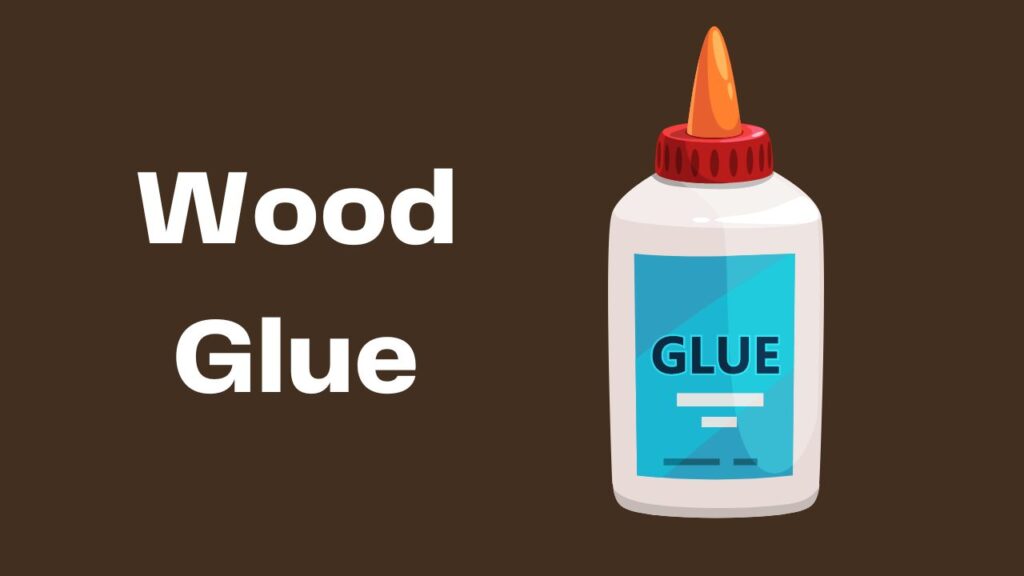
Now, let’s address the main question at hand: Does wood glue work on painted wood? The answer depends on several factors.
Factors to Consider
Before attempting to bond painted wood with wood glue, consider the following factors:
- Type of Paint: Different types of paint may have varying levels of adhesion to wood glue. Some paints contain additives that can affect the bond.
- Condition of the Paint: If the paint is peeling, chipped, or flaking, it is less likely to provide a solid surface for the wood glue to adhere to.
- Wood Type: Certain types of wood may have natural oils or finishes that can affect the bonding properties of the glue.
Compatibility of Wood Glue and Paint
In general, wood glue can bond reasonably well to painted wood surfaces. However, it’s important to ensure compatibility between the specific type of wood glue and the paint used. Some wood glues are formulated to provide better adhesion to painted surfaces.
Bonding Strength
The bonding strength between wood glue and painted wood can vary depending on the factors mentioned earlier. In most cases, the bond is strong enough for regular woodworking projects. However, it’s worth noting that the bond may not be as strong as when working with bare wood surfaces.
Best Practices
To achieve the best results when using wood glue on painted wood, consider these best practices:
- Surface Preparation: Ensure the painted surface is clean, dry, and free from any loose or flaking paint.
- Sand the Surface: Lightly sand the painted surface to create a rougher texture, which will enhance the bond between the wood glue and paint.
- Choose the Right Glue: Select a wood glue that is specifically designed for painted surfaces or has good compatibility with paint.
- Apply Sufficient Glue: Apply an adequate amount of wood glue to ensure proper coverage and bonding.
- Clamp or Secure the Joint: Use clamps or other methods to secure the bonded pieces together until the glue fully cures.
Common Mistakes to Avoid
When working with wood glue on painted wood, be aware of the following common mistakes:
- Applying too much glue: Excessive glue application can result in messiness and weak bonds.
- Insufficient drying time: Rushing the drying process can lead to incomplete curing and weaker adhesion.
- Neglecting surface preparation: Failing to clean and sand the painted wood surface properly can hinder adhesion.
Tips for Removing Glued Painted Wood
If you need to remove glued painted wood, consider the following tips:
- Apply heat: Use a heat gun or hairdryer to heat the glued area. This can soften the glue and make it easier to remove.
- Use a putty knife: Gently insert a putty knife or scraper between the glued surfaces to separate them.
- Sanding: If there are any remnants of glue or paint, sand the area lightly to remove them.
Related Questions
Q1: Can I use any type of wood glue on painted wood?
A1: Not all wood glues are suitable for painted wood. Choose a wood glue that is specifically designed for painted surfaces or has good compatibility with paint.
Q2: Is sanding the painted surface necessary before applying wood glue?
A2: Sanding the painted surface is recommended to create a rougher texture, enhancing the bond between the wood glue and paint.
Q3: How long does it take for wood glue to cure on painted wood?
A3: The curing time can vary depending on the type of wood glue used. Refer to the manufacturer’s instructions for specific curing times.
Q4: Can I use wood glue to repair chipped paint on wood surfaces?
A4: Wood glue is primarily designed for bonding wood, not repairing paint. It is recommended to use appropriate paint touch-up methods for repairing chipped paint.
Q5: Does the temperature and humidity affect the bond between wood glue and painted wood?
A5: Extreme temperatures and high humidity levels can impact the curing and bonding process of wood glue on painted wood. Follow the manufacturer’s recommendations for optimal application conditions.
Conclusion
In conclusion, wood glue can work on painted wood surfaces, but several factors need to be considered. The type of paint, condition of the painted surface, and wood type play significant roles in determining the bonding strength. By following best practices and using the appropriate wood glue, you can achieve reliable adhesion when working with painted wood.

